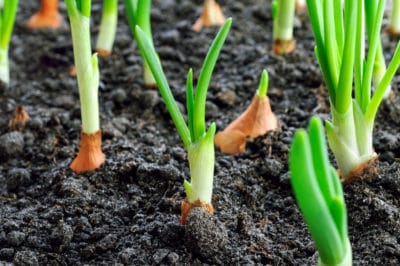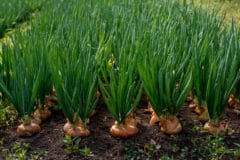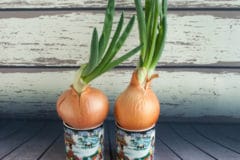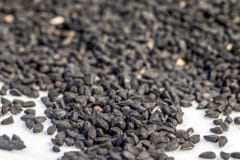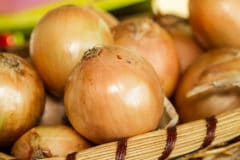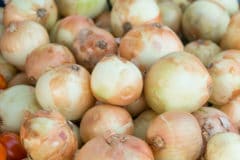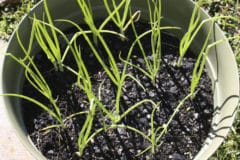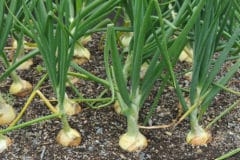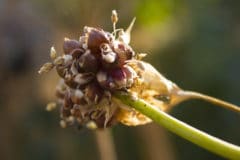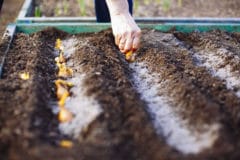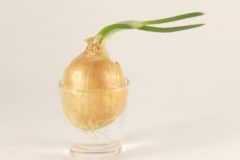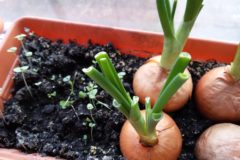What Are the Benefits of Starting Onion Seeds Indoors?
If you start your onion seeds indoors or in a cold frame before the growing season, your onion bulbs will be larger. Not only that, your onion yield will increase by two to three times that of planting seeds directly in the soil. The reason for this is the plants receive a good start indoors before their set in the garden, giving them the benefits of cool, spring weather. If you plant directly in the ground, you lose about a month of growth before your onion plants start. An early start will give you prize-winning onion bulbs.
When to Start Onion Seeds Indoors?
If you’ve decided to start your onion seeds indoors or in a hotbed, you can sow them in January or February. If you live in northern climates, planting in a cold frame in January is not an option, but you can use a hotbed. The earlier you sow your seeds, the better crop you’ll have.
You’ll have good results planting your seeds indoors in raised boxes, placed in front of a window. Using a 10″ X 18″ planting box with about four inches of rich soil will supply your family with fine onions throughout the growing season.
How to Make a Hotbed for Onion Seeds?
If you live in a northern climate, and you don’t have room in the house for starting onion seeds, a hotbed would be an effective solution. You can build your own hotbed for planting onion seeds in January or February. It is a box constructed of boards that slant from a 12-inch high back to a six-inch high front. A glass cover goes over the frame. The size of the box depends on how many onion plants you want to grow.
Follow these steps to set up your hotbed:
- Locate the box in a well-drained sunny spot, preferably facing south or southeast.
- Spread a layer of manure on the ground and place the box on top of it.
- Fill the box with the soil mixture of loam, sand and compost to about four inches from the top of the box.
- Make one-inch deep furrows in the soil about one and a half inches apart.
- Water the bed when the soil seems dry.
If you prefer, you can make a sunken hotbed by digging a pit in the ground, instead of constructing a box. Fill the pit with two feet of manure. Spread the soil mixture on top of the manure and sow your onion seeds. Follow the same planting method as for the hotbed box. Your plants will be ready to transplant into the garden after about two months.
What Soil Conditions Do Onions Need?
For the healthiest onion crop, you should plant your onion patch in sandy, well-drained soil that has a pH of 6.0 to 6.8. The onions should never stand in puddles of water. Even if you have a clay soil in your garden, as long as there is natural drainage, your onions will do fine.
The soil must also be free from stones, weeds and coarse gravel. If your garden has rich loam, then it shouldn’t require compost or manure. If it’s sandy or lacks nutrients, add organic compost and manure to the soil. Apply about one inch of compost or manure to the soil after tilling it in the spring. Mix it into the soil with a rake. Continue raking the garden until the soil is smooth and fine.
How to Harden Off Onion Seedlings?
When your seedlings have three sets of leaves, they’re ready to move into your garden. Harden them off for about seven days to get them ready for outside planting. You do this by placing your seed beds outside during the day and bringing them back inside at night. If you used a cold frame or hotbed, just open the glass cover during the day and then close it at night.
How to Trim Onion Seedlings?
Before planting your seedlings in the garden, trim the stems and roots. Follow these steps for trimming your seedlings:
- Remove the onion seedlings from the seedbed by running the point of a small garden trowel under them and gently lifting them out.
- Separate the stems and trim off the flimsy, top part of the stems.
- Trim the roots about one-half inch from the bulb or stem, making them short and stiff for easier planting.
When you trim the roots, they take hold of the soil quicker than if you left them long. Untrimmed plants tend to fall over, and you risk damaging them when hoeing weeds.
How to Transplant Onion Seedlings?
Use the corner of a hoe to make furrows in the soil in rows 14-inches apart and about one-inch deep. When you plant your onion seedlings at this depth, about two-thirds of the bulb will grow above the ground. This is what you want.
Set your onion seedlings two to three inches apart in the rows, firmly pressing soil around the bottom of the plant. You can use a dibber or knife for making the hole larger for planting. Anything fewer than two-inches apart will crowd your onion bulbs.
Cultivate the soil to one-inch deep on a regular basis to prevent weeds and keep the soil loose. The loose soil prevents water evaporation.
How to Plant Onion Seeds Directly in the Soil?
If you decide to plant your onion seeds directly in the soil, wait until early spring. Germination takes about two weeks. Keep your seed bed evenly moist. Thin the seedlings to three to four inches apart when they reach six-inches tall by pulling them out of the soil. You can plant the ones you pull up in other parts of your garden. The onions will mature in late summer.
How to Plant Onion Sets?
Onion sets come from onions grown the year before. Several benefits of planting onion sets are that they’re easy to plant, they reach maturity early and they’re less susceptible to disease. One drawback is that they tend to bolt or flower prematurely because they’re second year bulbs. Choose sets with one-half inch bulbs for the best results.
Plant the bulbs from two to four weeks before the last frost in your area. Just like the onion seedlings, set them in furrows about 14-inches apart and two to three inches between each bulb. Leave the tips of the bulbs above soil level when setting them in the ground. Thin them to about four-inches apart as the stems form.
How often should Onion Plants Be Watered?
Water your onions once per week, providing about one inch of water. You can use soaker hoses along the rows to prevent any standing water. Another watering method is to dig a trench between the rows and fill them with water. This prevents weeds from growing next to the bulbs, as well as preventing mold and fungus growth on the bulbs.
When to Harvest Onions?
Harvest your onions as soon as they reach maturity. You can tell when your onions are ready to pick because the tops will fall over and begin to dry up. When the majority of your onion tops fall over, don’t wait but pick them right away. You can either hand pick them or use a wooden rake across the rows to lift them above the ground.
Leave the onions on the ground until the rest of the onion tops get absorbed by the bulb and dry up. It could take about one week of dry weather for the onions to cure on the ground.
If you expect rain before they’re fully cured, gather them up and put them in an airy, dry place to finish curing. The onions should be completely dry before putting them in any kind of shelter.
How to Store Onions?
After harvesting your onions, dry them completely. Once dried, place the onions in a mesh bag or braid the onions for storage. Hang them in a cool, dry, well-ventilated area at a temperature of about 35°F (1.6°C). Onions are resistant to freezing but will not survive repeated freezing. Keeping them close to freezing prevents sprouting. The dried onion bulbs should keep from four months to one year, depending on the storage conditions.
